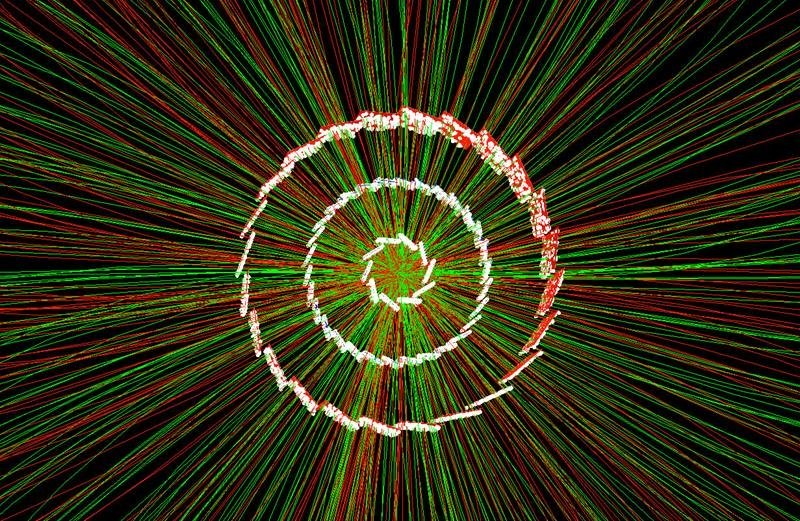Theorists calculated how the key ingredients of a phenomenon called the chiral magnetic effect should evolve over time in an expanding quark-gluon plasma. The theorists used the holographic principle to model the magnetic fields and other relevant characteristics needed for the effect. The results will help scientists interpret collision data and plan new searches for the chiral magnetic effect and the underlying quantum anomaly.
Tag: Quark Gluon
Tracking Jets in Hot Quark Soup Reveals a Mechanism of ‘Quenching’
Colliding atomic nuclei at very high energies “melts” the boundaries of individual protons and neutrons, setting quarks and gluons to form a quark-gluon plasma (QGP). Quarks or gluons in the colliding ions sometimes scatter off one another and then split, forming parallel sprays of particles called jets. Tracking how jets lose energy, called “quenching,” allows scientists to learn about the QGP and the nuclear strong force. New results find that some quarks lose energy even before they split to form a jet.

Charm Quarks Offer Clues to Confinement
Hadronization occurs when particles called quarks and gluons combine to form hadrons, composite subatomic particles made of two or three quarks. Once combined, quarks and gluons are “confined,” or trapped, in hadrons. Researchers studying particles containing heavy “charm” quarks have found that there are many more three-quark hadrons than expected under a widely accepted explanation of how hadrons can form.